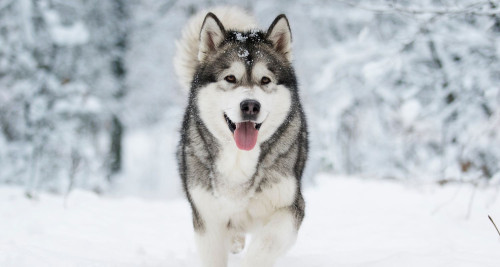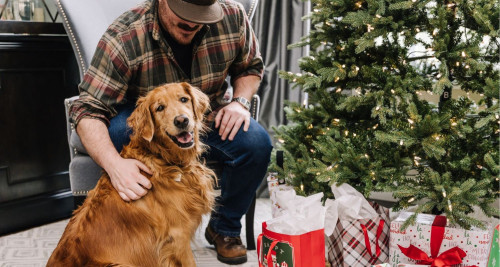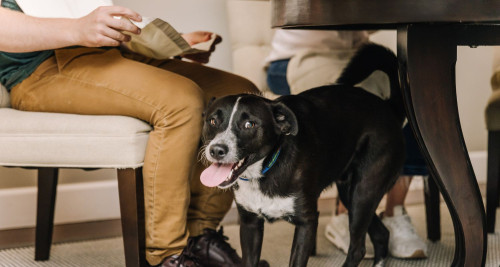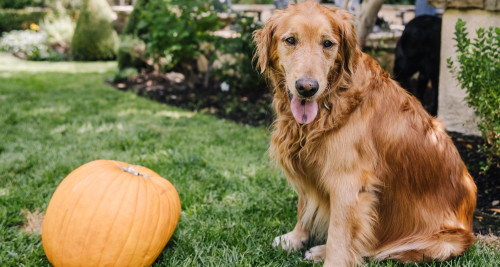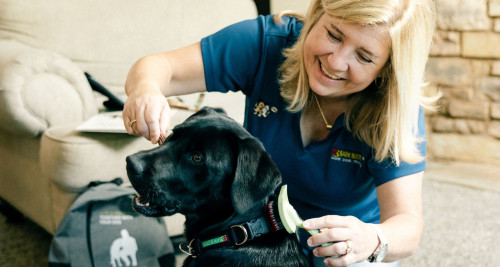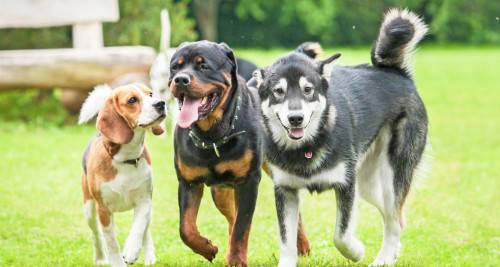Rottweiler
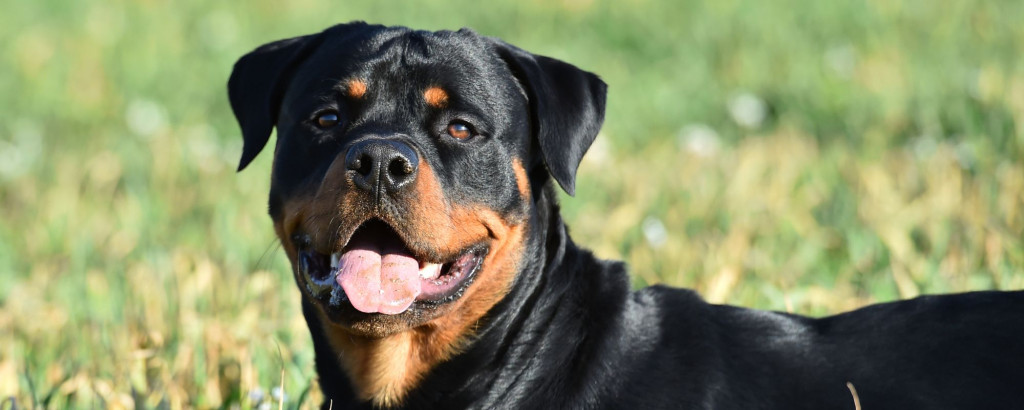
Breed Traits and Characteristics
According to the American Kennel Club, here are some breed characteristic you can find in Rottweilers.
- Height
24-27 inches (male), 22-25 inches (female)
- Weight
95-135 pounds (male), 80-100 pounds (female)
- Life Expectancy
9-10 years
- Coat Type/Length
Smooth/Short
-
100 affectionate with family
-
60 good with young children
-
60 good with other dogs
-
100 trainability level
-
60 energy level
-
20 barking level
-
60 shedding level
-
60 drooling level
History
Although its exact origins are murky, Rotties as they are fondly known, are thought to descend from dogs used by the Roman army. In the town of Rottweil, the dogs were used to herd cattle and get meat to the soldiers and butchers. One of the army marches led the dogs to Germany, where they were nicknamed Rottweiler Metzgerhund (or butcher dog). Because donkey carts replaced dog carts, Rottweilers were on their way to extinction until a resurgence in 1901 when the first club was formed.
In 1931, Rottweilers were introduced to the United States and became recognized by the American Kennel Club.
The Rottweiler
Majestic in stature with its massive muscles, the Rottweiler can be a gentle giant or an intimidating canine depending on its training and breeding. With a natural instinct towards protection, early socialization and consistent leadership will determine its temperament.
Despite some newspaper reports, Rottweilers are not inherently vicious. Well raised Rotties can be gentle giants if properly taught. Many people will mis-judge the breed and some cities have even banned it. Every Rottie dog owner who loves the breed can redeem its reputation by educating Rottweilers to obey and respect people.
Here's what the American Kennel Club has to say about the Rottweiler:
"A male Rottweiler will stand anywhere from 24 to 27 muscular inches at the shoulder; females run a bit smaller and lighter. The glistening, short black coat with smart rust markings add to the picture of imposing strength. A thickly muscled hindquarters powers the Rottie’s effortless trotting gait."
"A well-bred and properly raised Rottie will be calm and confident, courageous but not unduly aggressive. The aloof demeanor these world-class guardians present to outsiders belies the playfulness, and downright silliness, that endear Rotties to their loved ones. (No one told the Rottie he’s not a toy breed, so he is liable plop onto your lap for a cuddle.) Early training and socialization will harness a Rottie’s territorial instincts in a positive way.”
Rottweiler Breed Facts
Physical Characteristics
Rottweilers are a large dog and have developed an unfair reputation for viciousness as a “bully breed”. Their protectiveness is often misunderstood as aggressiveness. Weighing from 85 to 135 pounds and standing between one and two feet, Rottweilers can look imposing. With a well-recognized large head and distinctive black and tan markings, Rottweilers are great guard dogs, but can have a mellow and loving heart. Their personality often depends on their owner. You want a dog that is calm and watchful but not nervous or hyperactive.
They are slightly longer than they are tall with ears that are triangular and noses that are black and wide. Their lips and inside of their mouth are also black. Their eyes are almond-shaped and dark brown. The tail is customarily docked and dewclaws removed. Their fur is black with unique markings over their eyes, cheeks, chest, lower legs and under the tail.
Because of their size, even the gentlest Rottweiler can take down small children and the elderly who bump into them, so it’s important they be supervised. Because of their strength, Rottweilers make excellent police dogs, cattle herders and excel at tasks involving agility and endurance.
If a well-behaved Rottie is what you want, guidance and structure will be key. If possible, start training your puppy the minute he steps through your front door. Puppies are like sponges, eager to soak up all the information you provide. Socializing means not only introducing your dog to children, pets and strangers, but creating rules and boundaries for what is acceptable and what is not.
Personality & Temperament
Rottweilers are bold and confident and can even be shy around strangers. However, if someone threatens its family, it can be prone to attack. How a Rottweiler acts on its protectiveness will depend on its training. If it has been well socialized around children, strangers and other pets, Rottweilers can be well adjusted and well behaved at home and in public settings. If its leadership is inconsistent and it has been trained to fight, Rottweilers can be very dangerous and seriously injure others.
Bark Busters dog trainers teach dog owners to establish themselves as the “leader of the pack” from the start. We have seen Rottweilers whose aggression can be dangerous to even the good guys and Rottweilers that are lovable family companions. The difference is in the leadership abilities of the dog owners – you want your dog to respect you not fear you. With a dog as powerful and intelligent as the Rottweiler, it is important you become the “Top Dog”.
Know that two Rottweilers from the same litter can be very different. One may have a lot of energy, while the other is content to be a lap dog. Never assume because your Rottweiler loves your children that he loves all children. Rottweilers should always be supervised around unfamiliar children, because if they are roughhousing, your dog may misjudge the sense of danger. Dogs don’t see children as miniature adults. They see them as unpredictable creatures with loud voices who pull on their tail and try to sit on them. Rottweilers are very territorial and will never let strangers near its family unless its pet parents welcome them.
Unique Traits
No two Rottweilers are alike, but there are some traits common to the breed. Some are very reserved while others will delight you with their antics.
Unique Traits:
- Quiet, calm and don’t bark a lot
- Excellent guard dog
- Wait and see attitude
- Shy at first until you are found worthy of their love
- Not excitable
- Thrive on mental stimulation
- Eager to please
- Confident, steady and fearless
Fun Facts:
- The first Rotweiller came to the U.S. in the 1920s with a German immigrant.
- The Rottie’s coat is of medium-length and consists of a waterproof undercoat and a course topcoat. They shed twice a year – Spring and Fall.
- Even though Rotweillers are big, they are usually inactive indoors.
- Many Rottie’s snore so you might want to buy some ear plugs.
- They are the 17th most popular breed according to the AKC.
- This breed is banned in some cities.
- They rank in the top 10 smartest dog breeds.
Bark Busters Trainer Jeff Drier on Rottweilers
Rottweilers are large mighty dogs descended from the fighting Mastiffs used by Roman and other ancient armies. They are primarily working dogs, so like other working dogs, if you aren’t exercising their brains and giving them challenges, they will make up their own entertainment. This can lead to destructive behaviors like the stuffing from your couch spread all over your living room. Rottweilers can be independent and headstrong which means you need consistent training that is constantly reinforced. If you give them an inch, they will quickly be in charge. If you don’t teach them that answering the door is your responsibility, they will never calmly let anyone come into your home!
Rotties are smart, as are most working dogs, and will challenge you every day to test your mettle. A typical Rottie challenge might be to lay down when you tell him to sit. They just change things slightly to test if you are going to call them on this mid-behavior. If you don’t correct this behavior immediately, getting their cooperation will become more difficult. However, if you do make them get up and sit, you will gain their respect and establish your authority. You will be tested daily -- if and how you respond to these tests matters.
As much fun as it would be to wrestle with your Rottweilers, Bark Busters strongly cautions against it. While many dogs can safely wrestle with their owners, some don’t know when to stop or who it’s not ok to wrestle with. Rotties are not a dog to make this mistake with so it is much better to be safe than sorry. It is never a good idea to get physical with any dog, but it is dangerous to get physical with Rotties. You need to teach them to respond so you are not left without an option. You do not want to grab their collar to get them off the sofa or bed.
While they are wonderful dogs, they might not be the right dogs for novice dog owners or for those who just want to love their dogs. Living with a Rottweiler can be a challenge but those who have become accustomed to this breed will have no other.
These dogs need a complete and balanced relationship with their human pack. This means mutual love, trust and respect. Problems occur when there are misunderstandings or miscommunications. Bark Buster trainers are experts with Rottweilers and can teach pet parents to “speak dog” so you are correcting your dog in a language it understands.
Rottweiler Common Behavioral Issues
The two predominant training issues that Bark Busters trainers are called in to address with Rottweilers are aggressiveness and overprotectiveness.
Despite this, Rotties are very trainable and are high on Bark Busters list of ‘easy to train breeds’. They don’t take well to unstructured environments, so you need to be the one in control or they will quickly take the lead. Before you know it your Rottie will be answering the door and frightening anyone who knocks or rings the doorbell.
Rottweilers by their size and breeding are naturally watchful and protective.
Any aggression or overprotectiveness in a Rottie is attributable to their ‘naturally inherited’ traits, developed when no rules or boundaries are present. They must see a ‘pecking order’ in the household.
We have a saying at Bark Busters: “if the top position in the household is vacant, the dog will apply for the job.” It’s in their DNA to have structure and they will try and create it, where none exists.
All dogs need consistency in their life to feel safe and secure. Its up to you to ensure you provide this structure and set some rules to ensure your Rottie receives the very best education it possibly can.
Sometimes the only solution is professional training and Bark Busters are here to help if you feel that your dog needs some expert assistance.
For example, every time you approach a door the human should always be the first ones to walk though the door and then your dog, but only when you say its okay to do so. Choose the same word every time to let your dog know when he can walk through. The word ‘free’ works best as its not a word you would use a lot during normal conversation. If your dog anticipates the ‘free’ word and rushes through the door before you have said it, then repeat the exercise. Your dog must learn to take direction from you and not be the one making the decisions.
This might sound like a trivial thing, but in the ‘dog world’, the leader always leads and this sublimely lets your dog know that you are its rightful leader.
Another example of what we are talking about here is, do you allow your dog on the couch? If you do, then what rules will you set? Will you only allow him on the couch when you invite him on, or can he hop up on the furniture anytime he likes.
If you are not going to allow him on the couch at all, even when you are sitting on the couch, then you have to ensure that this is a rule and that you consistently hold to that rule, regardless of what your dog tries to do.
A list of rules might be as follows:
- All rules must be consistent and always adhered to if you want a well-behaved Rottie.
- Door manners - humans in the household go through all doors first.
- Don’t allow your dog to jump up on you. If you like this behavior, always make sure your dog gets the okay from you or he will jump on your guests and children.
- Furniture access should be consistently controlled and preferably on request from you or not at all.
- Do not feed your Rottie from the table because they are a very food-focused breed and will drive you and your guests insane anytime food appears on the table. If you feel mean doing this, remember you don’t want your dog begging for food.
Create your list of rules and stick to it as a firm plan and you and your Rottweiler will enjoy many enjoyable hours together.
Rottweilers put on weight easily, so it is important you feed it a high-quality diet rich in vitamins and minerals. Remember that dogs are carnivores, meaning meat should be an essential ingredient of their diet. Many commercial dog foods are high in grains because meat is more expensive. Many mis-behaviors can be attributed to poor nutrition. When you feed your dog a healthy diet, they will be more energetic, have less health problems, and are less likely to become overweight. Your Rottweiler’s diet will need to change as it grows from puppyhood to adulthood.
Connect with Us!
Need help training your Rottweiler? Call 1-877-500-BARK (2275)or enter your zip code.
Selecting a Rottweiler Puppy
If you are looking for a Rottweiler puppy, you can choose a reputable breeder or rescue a lucky dog from a shelter group. Contrary to opinion, shelters work hard to match the right owners with the right dogs. Most dogs are abandoned for the wrong reasons which usually lie with their owners. Shelters give their dogs health checks to make sure they are in good shape and up-to-date on vaccinations and will make you aware of any behavioral issues. Bark Busters trainers work with many local shelters to help overcome any behavioral issues before a dog is adopted.
A good breeder will try and screen out all the health problems inherent to the breed as much as possible. They should be happy to answer your questions about temperament and health considerations and should ask you questions about your lifestyle and goals. Many breeders are registered with the American Kennel Club’s American Rottweiler Club, where they abide by certain policies and screening.
Rottweiler Grooming
Rottweilers have a double coat of fur of medium length and coarse to the touch. If you want its coat to be shiny, brush it once/week to penetrate the natural oils. Twice a year the Rottweiler will shed its coat heavily and may require more brushing. Unlike humans, Rottweilers require little bathing.
Always check your Rotties ears for wax buildup or infection. Always use a cotton ball – never a Q-tip. To prevent tartar build up and gingivitis, brush its teeth weekly with a dog-approved toothpaste. It is best to trim a Rottweiler’s nails weekly, with a Dremel being an easy grinding tool to master.
Tips for Every Dog Owner
Hear from Bark Busters Clients Who Have a Rottweiler
Unlock Your Rottweiler’s Potential: Complete the Form and See How Professional Guidance Makes a Difference!
Enter your zip code and send in this brief form. We’ll contact you within 24 hours to learn more about your dog’s needs. Skip the guesswork of group classes—get tailored in-home support instead.
- 99.7% 4 or 5 stars 99.7% rate their experience with Bark Busters as 4 or 5 out of 5 stars.
- 99.6% Would Recommend 99.6% would recommend Bark Busters to their friends and neighbors.
- 99.5% Dog Responded 99.5% think their dog responded well to the training.
Need Dog Training Assistance with Your Rottweiler? Find Your Local Trainer Now!
CALL TODAY 1-877-500-BARK (2275)
